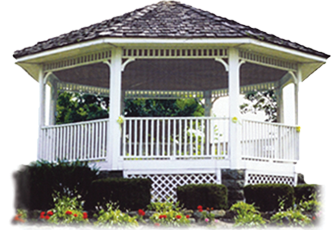Water main breaks are unpredictable, although a big factor is weather. The colder the weather is for an extended period of time; the more water main breaks seem to occur. Breaks can also occur when there is a sudden increase in water pressure in a water main, such as when a fire hydrant is closed too suddenly.
So far, 2021 has not been kind in this regard, as it has been reported that about sixteen breaks have occurred since the beginning of this year.
“This last couple months, we’ve had numerous breaks,” said Mayor Larry Antoskiewicz. He adds that the “Cleveland Water Department has been very diligent in addressing those breaks. “I think they’ve been really good here addressing what we need.”
“I know there has been some talk about getting some water lines replaced,” said Antoskiewicz. Some discussion took place at the North Royalton City Council’s February 2 Utilities Meeting, where Ward 5 Councilman Vince Weimer and Ward 6 Councilman Mike Wos discussed recent breaks in their wards and inquired what could be done to alleviate the problem. Antoskiewicz said he would discuss the matter with the Cleveland Division of Water (CDW).
The City will be applying for grants from CDW to replace some of the more problematic areas throughout the city. The City will be seeking the funding of the CDW’s Suburban Water Main Replacement Program, which offers grants twice a year. Antoskiewicz said they have application openings in January and July. “We do plan on applying this year. We’re getting the numbers from the Water Department to see the areas where we might have an opportunity.”
In the interim, if a water main break or leak occurs, residents should call the CDW emergency call center at (216)664-3060. The center is open 24 hours a day. When calling, residents should know the following information in order for the quickest response:
• The street name, address and city
• Is there a safety issue involved
• If there is damage, such as flooding or the road is damaged
• How much water is flowing, from a trickle to a major flow
• Is it causing a major service disruption to customers
• Are there dangerous conditions, such as icy surfaces or street depressions
Once they receive the report, an investigator from the CDW will be dispatched to the area in order to investigate the situation and determine the severity of the break or leak.
“The investigator may take the step of partially shutting valves in the area, to reduce the amount of flooding damage but still allowing some water service to customers until the repair crew can arrive,” according to CDW officials. “Based on observations, the investigator will re-prioritize the leak, potentially as an emergency if warranted, and will put the area into a temporarily safe condition. The status of all active repairs is constantly assessed and prioritized by managers, who will dispatch the next available pipe repair crew based on priority.”
When the repair crew responds to the area of the break, they will first set up a safety perimeter. They will then locate the leak and the valves that feed the broken main will be turned off, possibly causing a temporary disruption in water service to customers in the area. When this happens in repairing a non-emergency break, and if allowable, crews will go door-to-door to notify residents, allowing them some time to store some water before it is turned off. “The crew then will begin digging to expose the broken water main. Once exposed, the crew will determine what type of repair can be made or if a section of the water main will need to be replaced. Sheeting may need to be placed in the excavation, the repair is made, and then water service is restored. The final step is filling in the hole and preparing it for the restoration process. A typical repair can take anywhere from four-six hours, depending on the type of repair and the location of the break,” according to the CDW.
Frigid weather, or just the normal freeze/thaw cycle of a typical northeast Ohio winter can also cause problems of freezing pipes in the home. Leaving a faucet open during freezing cold weather can help prevent pipes inside your home from freezing and bursting. The water in the pipes get very cold and can freeze if exposed to the cold. By leaving it on, it helps to keep the water circulating, especially if there is a pipe that is exposed to cold, North Royalton Building Commissioner Dan Kulchytsky advised. He noted that “planning is critical. Don’t wait until the cold weather hits.” He also noted that a common problem, especially in older homes, is that the faucet bit on the outside of the house is not insulated and could cause the pipes to freeze. If that is the case, place a foam insulating cap on it to protect it. Also, make sure that the batteries in your thermostat are up to date. If not, switch out the batteries. Some of the programmable thermostats require batteries. Don’t wait to come home to a cold house, because your batteries have gone out. Frigid weather, coupled with a house that is not properly heated could lead to frozen pipes.
If your pipes freeze:
• Make sure that the pipe is not cracked.
• Keep the faucet open. As the frozen area starts to melt, water will flow and running water will help melt the ice in the pipe.
• Apply heat to frozen area using a hair dryer, an electric heating pad wrapped around the pipe, or towels soaked in hot water.
• Use a portable space heater (keep away from flammable materials) to warm the area. (Never leave a space heater unattended). Apply heat until full water pressure is restored.
• Call a licensed plumber if you can’t find the frozen area, if the area is not accessible, or if the pipe won’t thaw.
Never use a blow torch or open flame.
By GLORIA PLEVA KACIK
Contributing Writer
Frigid weather causes increase in water main breaks
Royalton Recorder Frigid weather causes increase in water main breaksFeb 23, 2021














